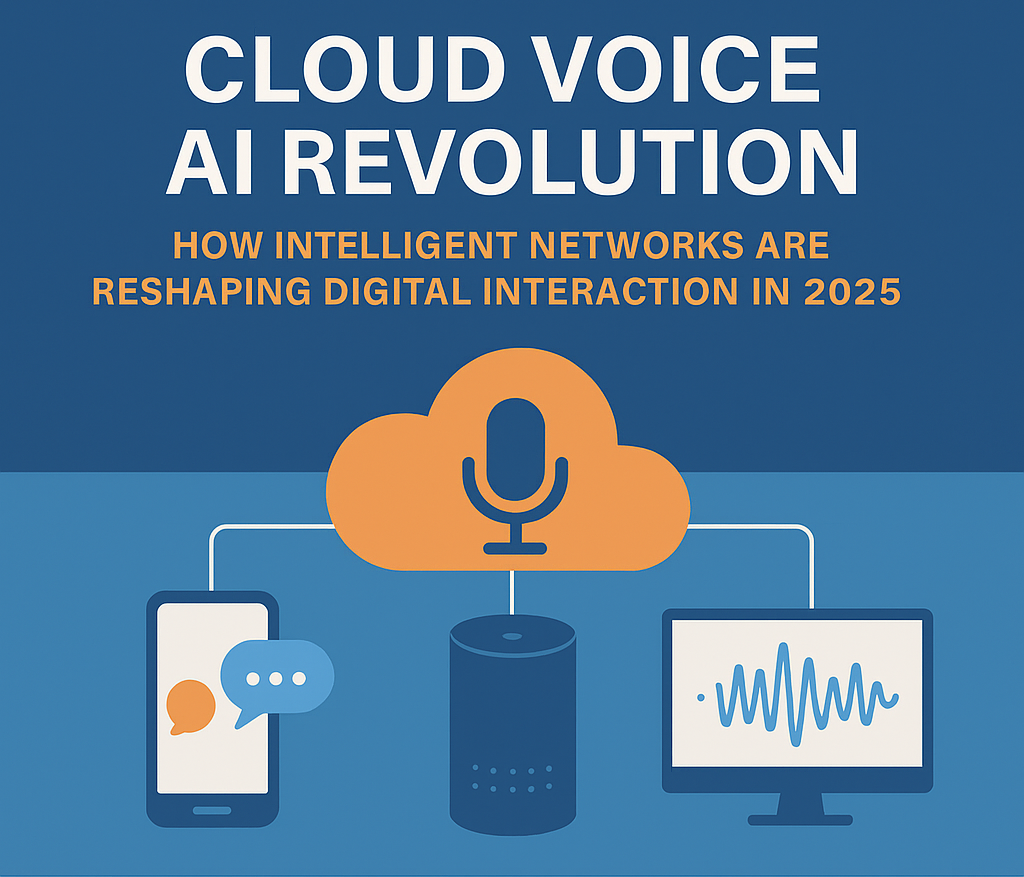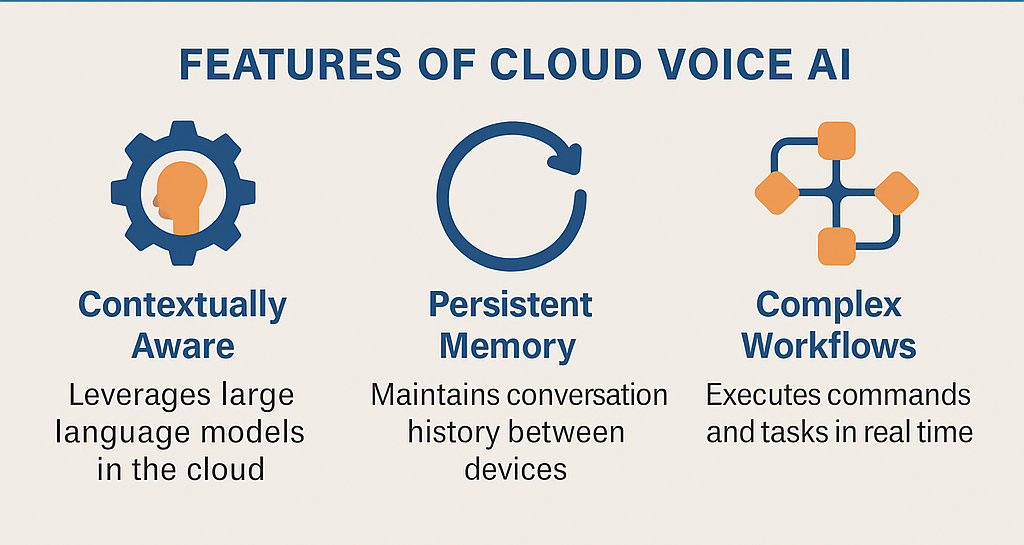

By Julian Jacquez, Chief Operating Office and President of BCN
The convergence of cloud computing and voice AI has passed the tipping point. In 2025, this powerful partnership is fundamentally transforming how both enterprises and consumers interact with technology. From anticipating user needs to maintaining conversational continuity across devices, cloud voice AI isn’t just evolving—it’s creating a whole new paradigm for digital interaction.

What’s Changing: From Static Voice Assistants to Intelligent Cloud Agents
Gone are the days when voice assistants were just glorified search tools. Today, cloud voice AI is:
- Contextually aware, leveraging large language models in distributed cloud infrastructures for lightning-fast, human-like responses.
- Capable of maintaining persistent memory, so a conversation started on one device continues smoothly on another.
- Executing complex workflows in real-time rather than simply answering queries.
Network & Infrastructure: The Foundations of the Revolution
These advances rely on more than clever software. Behind the scenes:
- Edge-cloud collaboration ensures that basic tasks are handled locally (for speed and privacy), while complex reasoning is offloaded to powerful cloud systems.
- Regional data centers are closer to users, helping reduce latency (often under 200 ms), which is key for natural conversational flow.
- Dynamic load balancing and elastic scaling allow voice AI systems to remain reliable—even during high-traffic moments like major news events or viral demand surges.
Real-World Impacts Across Industries
Cloud voice AI isn’t just theoretical—it’s driving change now in many sectors:
Healthcare: Real-time documentation of consultations; retrieving medical records during telemedicine; allowing doctors to focus more on patients than paperwork.
Finance: Fraud detection through voice pattern analysis; personalized financial advice; handling large volumes of concurrent voice interactions while meeting regulatory compliance.
Retail: Multilingual voice kiosks that access product info, check inventory across locations, manage returns via natural conversation; consistent updates via cloud.
Enabling Technologies: Networks, Optimization & Security
The technical enablers are critical:
- 5G and upcoming 6G networks provide the low latency and high bandwidth necessary for processing voice in the cloud, even from mobile or remote locations.
- Software-defined WANs (SD-WANs) help prioritize voice traffic, ensuring call and coversation quality even across geographically distributed offices.
- AI-driven traffic optimization means the network itself learns usage patterns and can avoid congestion or outages proactively.
Privacy & Security: Zero Trust, Federated Learning, Differential Privacy
Because speech data is sensitive, modern cloud voice AI uses robust security:
- End-to-end encryption for data both in transit and at rest.
- Zero-trust architectures, role-based permissions, continuous verification based on behavior.
- Federated learning and differential privacy allow models to improve across many users without exposing or storing individual conversations unnecessarily.
The Ecosystem & What’s Next: Voice as API & Ambient Interfaces
Looking forward:
- Many cloud providers now offer comprehensive voice-APIs, enabling developers to embed voice-capable, intelligent agents into apps, devices, or workflows without building everything from scratch.
- Voice agents from different vendors are becoming interoperable—crossing platforms while preserving context.
- Environments where voice is always “on” (offices, hospitals, public spaces) are becoming more common. Voice may shift from being just a user interface to being the primary interface layer for many digital interactions.
Why It Matters for Businesses & Consumers
- For businesses: streamlined workflows, higher engagement, better customer experience, new service models, competitive differentiation.
- For consumers: intuitive, natural, frictionless interaction with devices and services. Expect voice to feel less like giving commands and more like having a conversation.
Conclusion: The Voice-First Future Is Already Here
The voice-first future isn’t coming—it’s happening now. With cloud voice AI, intelligent networks, and secure architectures, digital interaction is becoming more human, more seamless, and more powerful. Businesses that adapt now will lead the next wave of transformation. Those that lag may find themselves trying to catch up.





